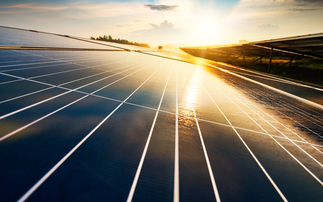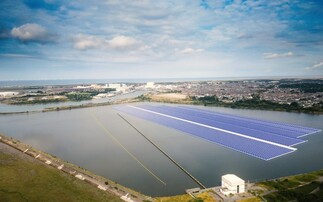Less gimmicks and more meaningful innovation and collaboration will spell success for European solar, argues First Solar's Stefan Degener
2016 was a milestone year for solar energy, with record low tariffs in the Middle East, Africa, and Latin America, helping photovoltaic (PV) solar shrug off the "New Energy" label. Headlines aside, 2016 was the year that solar energy effectively began to stand shoulder-to-shoulder with conventional power generation.
While the outlook in Europe wasn't quite as optimistic as it was in the emerging markets, the region had its own achievements to celebrate: it marked 100 gigawatts of grid-connected installed capacity, an unprecedented accomplishment; the European Commission launched its "Clean Energy for All Europeans" package, a policy framework for the deployment of renewables until 2030; tender-based procurement mechanisms became more common; Germany and Demark piloted the region's first cross-border tender; Europe pioneered the creation of a solar Operations and Maintenance (O&M) best practices framework that established a global benchmark; and, if the number of exhibitors at Intersolar 2016 was anything to go by, the region's energy storage industry was thriving.
Importantly, while tariffs in the emerging markets made headlines, Europe wasn't far behind in terms of the cost-competitiveness of solar, as auctions in the Netherlands and Denmark demonstrated last year. In fact, the Netherlands' SDE+ technology-neutral auction was notable for the fact that it saw utility-scale PV hold its own against other power generation technologies.
As we kick off 2017, the main question is: how do we turn fulfill our long-term climate commitments? For starters, it is important for policymakers and the industry to recognise that the road to a clean energy future for Europe isn't necessarily paved with solar panels. In fact, the region needs to maintain a singular focus on procuring cost-competitive solar without being distracted by gimmicks. The economics speak for themselves: the larger-scale a solar energy generating system is, the more cost-competitive it is. Just like any industry, solar benefits from the economies of scale, in any part of the world.
While 2016 also saw some debate about the future of large-scale solar in Europe - and it became apparent that the 100 megawatt (MW) projects are a thing of the past - the industry has largely come to accept a reality where large- or utility-scale solar projects in the region now range from 1MW to 50MW. The versatility of PV, combined with advancements in technology, offers regulators and legislators a choice of commercial models that can be employed to encourage subsidy-free utility-scale solar, without diminishing the importance of smaller-scale systems.
Apart from the larger-scale power plants that are owned and operated by Independent Power Producers (IPPs), community-owned projects are of growing interest and must remain an area of focus for Europe's renewable energy plans. Cooperative-owned solar projects are common in countries like Germany, which has a long-established track record in this segment, which has the potential to become ubiquitous across Europe. One could argue that dozens, or hundreds, of households investing in a large community-owned project is an effective way of ramping up solar energy capacity without having to manage the - technical, regulatory, and administrative - complexities and costs associated with smaller-scale systems.
Also of importance is the need for Europe to evolve existing tender-based procurement systems to meet the eventual requirements of a fully interconnected electricity grid. As the region attempts to enhance and future-proof its power grid, it will be critical - as Solar Power Europe pointed out in a 2016 report - for greater convergence in the various tendering mechanisms being used by different countries. Although, the German-Danish cross-border pilot was deemed a success and is seen as a move in the right direction, it is unrealistic to expect a step change. Europe would do well to prioritize the process of aligning national renewable energy procurement models in order to create a solid foundation for pan-regional interconnection.
Finally, the success of Europe's energy transition will also depend on embracing the full potential for utility-scale energy storage. The fact of the matter is that demand helps lower pricing and a reform of policy mechanisms to allow greater cross-border flexibility in trading energy could provide the fillip that the industry needs to boost the cost-competitiveness of utility-scale storage systems. The possibilities are many with the bottom line being that enhancing utility-scale energy storage will help the region address the challenge of the intermittence of solar energy.
The policy foundation for much of this was created with last year's launch of the Clean Energy for All framework, which, among other things, seeks to revamp the design of Europe's energy market. Most significantly, the policy package outlines plans to remove wholesale price caps, allowing electricity pricing to reflect the real value of supplying energy at a specific time of day or in areas where demand is high. This promise of enabling a demand-based pricing response, combined with interconnected grids opens up a wealth of opportunities for utility-scale solar, combined with utility-scale storage.
Europe has a very real opportunity to lead the world into a wide-ranging energy transition. It must do so, not by joining a race to the bottom with headline-grabbing tariffs and gimmicks, but by encouraging true innovation and collaboration, and nurturing healthy competition. This combination of innovation, collaboration and competitiveness is what will drive our ambition for a sustainable future.
Stefan Degener is the head of Business Development for First Solar in Europe and Africa








